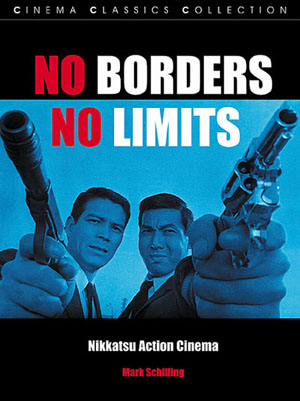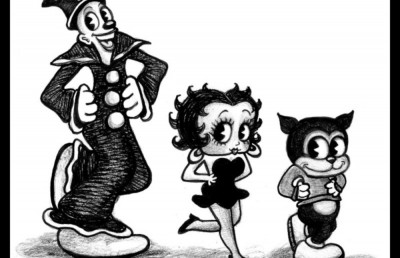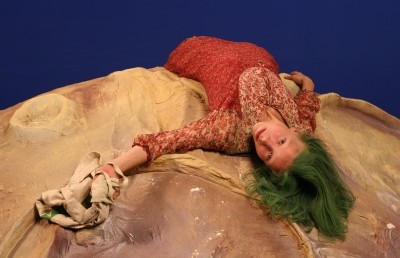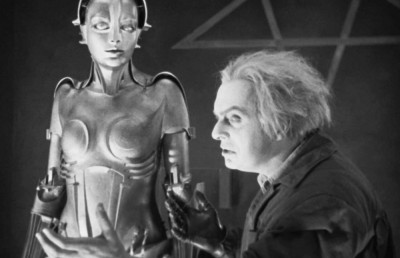Behind the Pink Curtain Retrospective
Fantastic Fest 2008
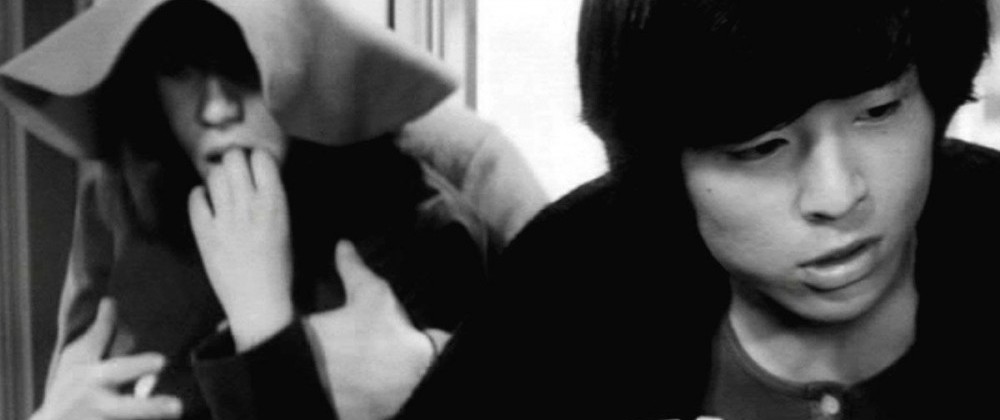
Fantastic Fest in Austin, Texas is building a strong reputation as a launching pad for some of the most interesting retrospective programming on the film festival circuit. In 2007, the festival was the inaugural stop in the No Borders, No Limits: Nikkatsu Action Cinema series presented by Mark Schilling and Marc Walkow of Outcast Cinema. The 2008 edition of the festival initiated a new and more risqué retrospective series entitled Behind the Pink Curtain. Jasper Sharp of Midnight Eye, along with Marc Walkow, assembled the retrospective to coincide with the publication of his FAB Press book of the same title. This program, which will be touring film festivals in different versions, consisted of four pinku eiga (pink films) representing four decades of erotic cinema in Japan. The foundation of the touring program is built from brand new 35mm prints of Blue Film Woman (1969) and Gushing Prayer (1971). These prints were struck by Japanese pinku distributor Stance specifically for this retrospective. Two additional titles were added for the Fantastic Fest program: Pink Eiga’s international versions of S&M Hunter (1986) and A Lonely Cow Weeps at Dawn (2003). Until recently, none of these films has ever been available with English-subtitles.
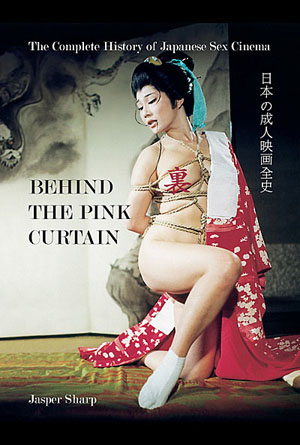
Those unfamiliar with pink films will wonder what makes this form of cinema worthy of a retrospective. First, pink films are basically Japanese erotic films, but these particular movies are unique in both the way they are made and their content. In the book Behind the Pink Curtain, Jasper Sharp identifies Japan’s unique trajectory towards this style of filmmaking. He finds pinku antecedents such as the girl diver (ama) films of the 1960s, which involved nude or semi-clothed women diving for clams, shellfish and abalone. Sharp goes on to identify the first pink film as Satoru Kobyashi’s Flesh Market (1962). This style was initially dubbed eroduction (“erotic” plus “production”) to reflect the films’ contents and low budgets. The term eroduction eventually gave way to the term pinku eiga. These films gave rise to a form of independent cinema with its own distribution channels and theater chains, making them economically and aesthetically distinct from sex-oriented films produced by bigger studios such as Toei (Pinky Violence) and Nikkatsu (Roman Porno).
Pink films are not limited to specific genres; action, comedy, drama and horror are all represented within the field. Pink films are usually shot on 35mm film and cost in the range of ¥ 3.5 million (roughly $30,000 U.S. dollars). The films are generally no longer than one hour and must feature a specific allotment of sex scenes. By law, no actual sexual activity can be shown. All interactions are simulated or filmed in ways that obscure forbidden bodily contact. Once these basic requirements are met, filmmakers are basically left to their own devices regarding content. As a result, pink films are often, but not always, loaded with subversive ideas, outrageous themes and surreal aspects that evade mainstream filmmakers. Finally, unlike in other countries, Japan’s erotic film industry is populated by skilled professionals and often serves as a training ground for budding filmmakers. Some pink filmmakers have crossed over into the mainstream (e.g., Kiyoshi Kurosawa of Cure, Pulse and Tokyo Sonata fame), while others got their start working on erotic films for large studios such as Nikkatsu (e.g., Hideo Nakata of The Ring series and L: Change the World). Thus, with this background in mind, an analysis of the films forming the Behind the Pink Curtain retrospective can proceed.
Kan Mukai’s Blue Film Woman (Burû fuirumu no onna) is one of the few pinku eiga from the 1960s for which 35mm negatives still exist. Blue Film Woman begins by showing a family man whose speculation on the stock market fails and leaves him in serious debt to a lecherous man named Uchiyama. A deal is struck between the parties: in exchange for extending the time to pay the debt, the man’s wife “loans” herself to Uchiyama. Unbeknownst to the couple, the “interest” on the loan includes the wife’s trip to a crawlspace where Uchiyama’s drooling, brain-damaged son Hiroshi awaits. After an encounter with Hiroshi, the wife is run over by a car. The despondent stock broker eventually kills himself. Mariko, the young daughter of the now extinct couple, then sets out on her own as an independent woman. She earns money by working as a go-go dancer and a call girl. She saves her money with the intention of paying back Uchiyama. Once her father dies, however, she shifts her attention to revenge.
Until the 1970s, most pink films were photographed in black and white. Blue Film Woman is an early example of a full-color widescreen pinku. ??Blue Film Woman??’s use of erotic film loops projected on dancing nude women, color filters, strobe effects that seem to be created by opening and closing the camera shutter and funk and soul music (e.g., James Brown) scream of the psychedelic 60s. On the other hand, the film’s narrative is a morality play that seems to be as conservative as it is depraved. The story is a tragic drama whose plot is driven by sex and money. At first, sex and money are shown as potential paths to independence for the women. This idea collapses as the men are the ultimate winners in this greedy fight for survival. Perhaps the bizarre sexual encounter between Hiroshi and Uchiyama, which is so inappropriate as to be comic, serves as some sort of justice. However, Uchiyama walks away from this encounter while the young girl dies by the end of the film. Given the quick hit-and-run nature of pinku eiga filmmaking, Mukai’s mixing of these elements could just have easily been the result of a haphazard coincidence.

Unlike Blue Film Woman, Masao Adachi’s Gushing Prayer is a political allegory that is best summarized as obtuse. The film presents four high-school students (two females and two males) who are involved in a group relationship. Yasuko is the most precocious of the group. Her budding sexual curiosity and teenage alienation compels her on a path to “beat” or transcend sex by reducing the sexual act to an economic transaction. She becomes a kind of existential prostitute who engages in random encounters in public and private venues. Along the way, Yasuko becomes pregnant and is subsequently faced with the question of whether or not to terminate her pregnancy. Gushing Prayer plays with a character framework similar to Jean-Luc Godard’s Masculin, féminin, but dispenses with that director’s sense of humor and playfulness. The film’s black-and-white photography is mesmerizing and the footage of the foursome walking through fog has an almost iconic quality. As with many pink films of the time, scenes occasionally switch to full-color to highlight dramatic elements. This approach is used to horrifying effect in scenes that portray the fate of Yasuko’s unborn child. The visual aspect of the film draws the viewer in, but the content seems intentionally designed to alienate the audience. The young, stone-faced actors dispassionately render the dialogue, which alternates between oblique statements and obscure references that never congeal into a direct message. Certainly, it was the atypical Japanese high-school student of the 1960s who quoted George Bataille in casual conversation. While the film implies that the only way to deny the biological reality of sex is through death, no explicit statement is made. As Jasper Sharp explains in Behind the Pink Curtain, Gushing Prayer operates as an allegory for the political turmoil occurring in Japan during the time. Among the many street scenes are parades of jeeps and tanks that reflect the increased police presence in response to the left-wing terrorism by the Red Army and its various splinter groups. ??Gushing Prayer??’s indirect approach never really allows for the development of an emotional connection, but anyone who appreciates abstract intellectual approaches in film will certainly find much worth mulling over.
In the 1980s, the content of many pink films became more extreme. Shuji Kataoka’s S&M Hunter (Kinbaku – SM – 18 sai) is likely to be one of the most outrageous of these titles. S&M Hunter is the second film in a series also known as Roper from Hell (Jigoku no Ropaa). The first entry is called S&M Hunter Begins (Sakasa Tsurushi Shibari-nawa). In S&M Hunter, a misogynist goes to a dungeon where he takes out his frustration on a woman dressed as a nun. After a bit of psycho-analysis, the dungeon master proves to him that he is neither a sadist nor a masochist but simply someone who dislikes women. He does so by presenting him with the ultimate sadist who is played by Shirô Shimomoto from the pink film Uncle’s Paradise (Ojisan tengoku). Dressed like Indiana Jones with a skull-and-bones eye-patch, the “roper from hell” is a master of kinbaku: Japanese rope bondage. He is so skilled at the art that he can quickly wrap a body in complex rope patterns, including massive, ornate spider webs, before the victims have the chance to escape. Eventually, the misogynist reveals his homosexuality as well as the fact that an all-female gang named the Bombers kidnapped his boyfriend. The Bombers are lead by Meg (Japanese bondage artist Hiromi Saotome). The roper from hell agrees to help liberate the man’s boyfriend. However, Meg has a secret history with the roper that leads to a finale battle in which a crane truck is used to execute the ultimate kinbaku trick.
Kinbaku-themed pink films are not unique, but S&M Hunter adds vulgar humor and taboo imagery to its array of tools. Nothing in the film is taken seriously, but for some, the casual nature in which the film presents misogyny, homophobia and generally offensive ideas might be hard to stomach. For example, a scene leading up to the final face-off begins with Meg unexpectedly dressing up in a Nazi officer’s uniform and posing in front of a Nazi flag. This choice of dress and scenery plays no functional role in the narrative. It simply introduces a fetishistic element into the film’s exaggerated manga-style.
Although S&M Hunter traffics in offensive content for humorous effect, the film is a bit more complex than it appears on the surface. Culturally-rooted humor and references can be completely lost on Western audiences. As explained by Pink Eiga’s Ayuma Oda, S&M Hunter features a parody of Japanese cinema that is rich with visual and linguistic puns. Kimi no Na wa (What is Your Name?) was a popular three-part romance released between 1953-1954 by Shochiku Studios. The trilogy tells the story of Haruki and Machiko, who are strangers that attempt to meet during World War II. Chance circumstances constantly thwart their rendezvous. In this trilogy, the Machiko character wore a head-scarf that became a popular fashion in Japan (Machiko-maki). At the beginning of the trilogy, Machiko meets Haruki. As they rush from Tokyo Bridge to go their separate ways, Haruki says “kimi no na wa” or “what’s your name?” S&M Hunter parodies Kimi no Na wa in some interesting ways. A scene is featured in which Machi, who dawns a scarf, meets the roper on a bridge just like in the classic Japanese romance. The roper tells Machi: “kimi no na wa.” The same pronunciation that yields “what is your name” in the original context actually means “this is your rope” in this scene. Such visual and linguistic play may not impress naysayers, but it reveals as in all the films discussed here, context is a significant factor in appreciating why pink films are so unique.
Daisuke Gotô’s A Lonely Cow Weeps at Dawn (Yoake no ushi) adds an element of the surreal to a tale of Japanese drama and romance that creates an interesting balance between traditional and alternative cinemas. A Lonely Cow, also known as Cowshed of Immorality, presents the story of a widow named Noriko who wakes up every morning at sunrise to get to the house of her father-in-law (the late Horyu Nakamura) before he does. Once there, Noriko disrobes and pretends to be the senile man’s prize cow. Yes! The logic behind the woman’s charade is to prevent the man’s daughter from taking over the farm by having him declared as incompetent. It becomes obvious, however, that the woman is attracted to the older man and her underlying motive is to feed her romantic desires. The father-in-law shows affection for Noriko that suggests he is equally interested, but it is also obvious that he slips in and out of delusional states. The cowshed fantasy game eventually leads to a physical encounter, but the relationship comes to an abrupt halt once the elderly man commits himself to a hospital.
The thought of a film focusing on a woman who is mistaken for a cow conjures up numerous unpleasant images. Gotô‘s film integrates this weird idea so tightly into a straightforward story of forbidden love that it works. In correspondence conducted for this article, Gotô cited his own imagination as well as Bernardo Bertolucci’s 1900 (Novecento) and Yasujiro Ozu’s Late Spring (Banshun) as thematic influences. Cultural symbolism also plays a role. A Lonely Cow uses physical acts, as opposed to words, to convey emotions and feelings. As previously mentioned, Noriko has dual motives: helping the older man and fostering a taboo relationship. Throughout most of the film, she expresses her emotions, in part, by pretending to be the man’s cow. No verbal expressions of love are made until the two characters engage in a physical encounter. Once this is over, the verbal expression of emotions disappears. Upon marriage, many Japanese couples buy two bowls as symbol of marriage. The pair is shown eating meals throughout the movie with two such bowls. Here, the two bowls symbolize the internal feelings of love that cannot be acted upon because of the father-in-law/daughter-in-law relationship. Near the end of the film, Noriko prepares to leave the house after the deed has been turned over. A specific shot shows a single bowl, as opposed to two, in the kitchen, which symbolizes the end of the relationship.
The range of films presented demonstrates that pinku eiga is more than just a form of erotic cinema. It is a platform for experimentation and free expression that can deal with a variety of topics in rare and interesting ways. Certainly, not all pinku eiga films rise above the designation of low-budget soft core; with thousands of films produced since the 1960s, it would be difficult to make such a claim. However, when tackled by creative filmmakers such as those discussed in this article, these films can be as interesting and engaging as mainstream cinema.
The author would like to give special thanks to Ayumu Oda of Pink Eiga, Daisuke Gotô, Harvey Fenton of FAB Press, and Jasper Sharp of Midnight Eye for their assistance.
